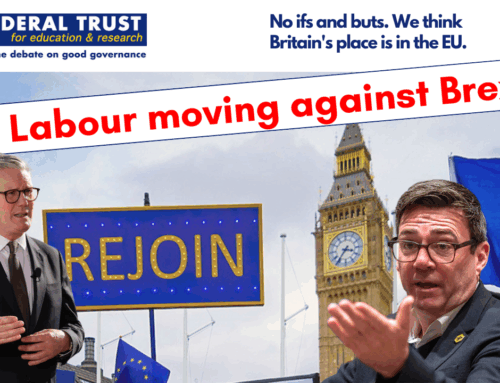by David Quinn
Former international civil servant
One of the assumptions underlying the Brexiteers approach to Brexit has been the firm conviction that the UK, the world’s 5th largest economy, would have no difficulty in imposing a trade deal on the EU which would permit the country to maintain the benefits of membership of the EU – ‘the frictionless trade target’ announced by Theresa May – while pursuing its own trade initiatives in the future, even as a competitor to the EU.
To their surprise and continuing disbelief, the solidarity showed by the 27 Member States to the EU and its institutions has not allowed this to happen. There is, however, a dimension to this European solidarity which might not be obvious to the political observer but which has nonetheless played an important part in the negotiations between the EU and the UK over the last four years.
This dimension one might call the human relations one, the “working together” over the years which creates bonds and understanding.
The fact is that it has been demonstrated in Europe since 1945 that even the fiercest enemies can change their personal relations with each other when they work together on common projects which they have devised together and which bring mutual benefits to both parties.
Three former Prime Ministers of Ireland, in giving testimony to a House of Lords committee in 2017 examining the UK relationship with Ireland in the light of Brexit, emphasised how their relationship with the UK had changed completely following the entry of both countries into the then EEC.
As they explained, the regular personal contacts with their UK partners in Brussels or elsewhere transformed (their words) their relationship.
The extraordinary thing about the Brexiteers has been their total inability to perceive or understand the nature of the “rapprochement” of nations that has been taking place in Europe since the last war, the benefits that it has brought and the consequence of this “working together” which it has entailed. In fact, in spite of Theresa May’s statement in the White Paper in 2017 that the success of the EU was in the national interests of the UK, the Brexiteers’ undeclared objective has been to destroy it.
So, as the Brexiteers have not understood or participated in this process of “rapprochement”, nor shared the objectives of the different participants in the European project, they assumed that they would be able to bypass the European institutions and deal directly with the individual Member States, in particular with “their peers”, France and Germany, in a cynical exercise of ‘Realpolitik’, which seeks to maximise national interest in the narrowest sense. It was as if the last 60 years of the construction of the European project had not taken place.
The fact is, however, that working together for a common end in the European institutions over all these years has created a fellowship and bonds which have affected both Ministers and civil servants involved; it might be described as the glue which both holds them together and helps to shape the whole future construction. Of course, there are many imperfections in the workings of the different institutions and certainly room for improvement in many ways.
But the point is the participants in this project and those who support it, believe in what is being done. And those who have worked together to achieve what has been accomplished so far have faith in the integrity of their fellow participants and in their shared objectives.
It is important to understand this dimension of solidarity and the part it has played in maintaining the overall collective response by the 27 Member States to the UK’s attempt to divide and conquer and “to have its cake and eat it”.





